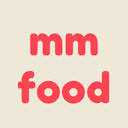Navigating Arabic Cuisine on a Low-Oxalate Diet: Your Survival Guide
Discover how to enjoy Arabic cuisine on a low-oxalate diet. Learn ingredient swaps, safe menu choices, and how mm food app identifies kidney-friendly dishes in real-time.
MM Food Team

Dine Confidently Anywhere
Get the MM Food app for instant menu translation and allergy detection.
Navigating Arabic Cuisine on a Low-Oxalate Diet: Your Survival Guide
Enjoying Arabic cuisine while managing oxalate intake can feel challenging, but it's absolutely achievable with the right knowledge. Traditional Arabic dishes often feature ingredients like spinach, nuts, and beans—which are high in oxalates—making menu navigation tricky for those with kidney stones or dietary restrictions. Fear not! This guide highlights safe choices and practical strategies to savor Arabic flavors without compromising your health.
Oxalate Traps: Common Culprits in Arabic Menus
Watch out for these high-oxalate ingredients prevalent in Arabic cooking:
- Leafy Greens: Spinach (featured in Fatayer pastries and stews), parsley (in Tabbouleh)
- Nuts & Seeds: Tahini (in hummus and sauces), pine nuts in rice dishes, sesame garnishes
- Beans & Grains: Fava beans (Ful Medammes), chickpeas (hummus), cracked wheat (Bulgur)
- Vegetables: Eggplant (Baba Ghanoush), beets, sweet potatoes
Smart Menu Choices: Low-Oxalate Arabic Staples
Prioritize these naturally low-oxalate options:
- Grilled Proteins: Chicken Shish Tawook, lamb Kebabs, or fish sayadieh (hold the tahini sauce)
- Salads & Veggies: Cucumber-tomato salad (seedless), Fattoush (request light pita), steamed green beans
- Dairy: Labneh (strained yogurt), unsalted white cheese, milk-based desserts like Muhallabia
- Safe Carbs: White rice, pita bread (in moderation), lentils (½ cup max)
- Fruits: Watermelon, grapes, and peeled apples (ideal dessert swaps for baklava)
Pro Tips for Dining Out
- Request sauces/dressings on the side to avoid hidden tahini or nut pastes
- Substitute high-oxalate sides (like Moutabal) with grilled vegetables or labneh
- Avoid soups/stews with lentils or spinach—opt for clear broths instead
- Skip nut garnishes and sesame breadsticks
How mm food App Simplifies Your Experience
Transform dining anxiety into confidence:
- Set Restrictions: Activate "Low-Oxalate" in your mm food profile or customize alerts (e.g., "avoid spinach, tahini, nuts")
- Scan & Translate: Point your camera at Arabic menus for instant translation
- AI-Powered Analysis: Our technology cross-checks dishes against your restrictions, highlighting safe options like:
- ✅ Shish Tawook (grilled chicken)
- ✅ Fattoush (without excessive pita)
- ❌ Hummus (tahini alert!)
- ❌ Spinach Fatayer
- Instant Clarity: Red/yellow/green labels show risk levels, with ingredient breakdowns for informed choices
Empower your next culinary adventure—relish Arabic food traditions without compromise. With mindful selections and mm food's real-time guidance, vibrant flavors and wellness coexist beautifully.
Tags

Dine Confidently Anywhere
Get the MM Food app for instant menu translation and allergy detection.